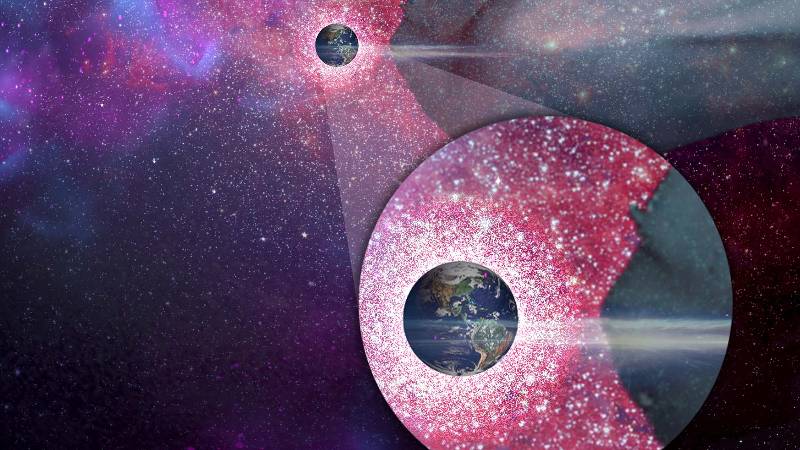Around two million years ago, when our early human ancestors shared the planet with saber-toothed tigers, mastodons, and giant rodents, Earth was a dramatically different place.
It had plunged into a deep freeze, with multiple ice ages coming and going until about 12,000 years ago. While scientists theorize that ice ages occur for various reasons, including the planet’s tilt and rotation, shifting plate tectonics, volcanic eruptions, and atmospheric carbon dioxide levels, a new study suggests that drastic changes like these may not only result from Earth’s environment but also from the sun’s location in the galaxy.
In a paper published in Nature Astronomy, lead author and astrophysicist Merav Opher, an astronomy professor at Boston University and fellow at Harvard Radcliffe Institute, found evidence that some two million years ago, the solar system encountered an interstellar cloud so dense that it could have interfered with the sun’s solar wind. Opher and her co-authors believe this shows that the sun’s location in space might shape Earth’s history more than previously considered.
The Heliosphere: Earth’s Protective Plasma Shield
The entire solar system is enveloped in a protective plasma shield known as the heliosphere, which emanates from the sun. It consists of a constant flow of charged particles, called solar wind, that stretch well past Pluto, wrapping the planets in what NASA calls a “giant bubble.” This shield protects us from radiation and galactic rays that could alter DNA, and scientists believe it’s part of the reason life evolved on Earth as it did. According to the latest paper, the cold cloud compressed the heliosphere in such a way that it briefly placed Earth and the other planets outside of the heliosphere’s influence.
“This paper is the first to quantitatively show there was an encounter between the sun and something outside of the solar system that would have affected Earth’s climate,” says Opher, an expert on the heliosphere whose models have significantly shaped our scientific understanding of the bubble and how it is structured by the solar wind pushing up against the interstellar medium.
Tracing the Sun’s Path Through the Galaxy
To study this phenomenon, Opher and her collaborators essentially looked back in time, using sophisticated computer models to visualize where the sun was positioned two million years in the past, along with the heliosphere and the rest of the solar system. They also mapped the path of the Local Ribbon of Cold Clouds system, a string of large, dense, very cold clouds mostly made of hydrogen atoms. Their simulations showed that one of the clouds close to the end of that ribbon, named the Local Lynx of Cold Cloud, could have collided with the heliosphere.
If that had happened, says Opher, Earth would have been fully exposed to the interstellar medium, where gas and dust mix with the leftover atomic elements of exploded stars, including iron and plutonium. Normally, the heliosphere filters out most of these radioactive particles. But without protection, they can easily reach Earth. According to the paper, this aligns with geological evidence that shows increased 60Fe (iron 60) and 244Pu (plutonium 244) isotopes in the ocean, on the moon, Antarctic snow, and ice cores from the same time period. The timing also matches with temperature records that indicate a cooling period.
“Only rarely does our cosmic neighborhood beyond the solar system affect life on Earth,” says Avi Loeb, director of Harvard University’s Institute for Theory and Computation and coauthor on the paper. “It is exciting to discover that our passage through dense clouds a few million years ago could have exposed the Earth to a much larger flux of cosmic rays and hydrogen atoms. Our results open a new window into the relationship between the evolution of life on Earth and our cosmic neighborhood.”
The outside pressure from the Local Lynx of Cold Cloud could have continually blocked out the heliosphere for a couple of hundred years to a million years, Opher says, depending on the size of the cloud. “But as soon as the Earth was away from the cold cloud, the heliosphere engulfed all the planets, including Earth,” she says. And that’s how it is today.
If our reporting has informed or inspired you, please consider making a donation. Every contribution, no matter the size, empowers us to continue delivering accurate, engaging, and trustworthy science and medical news. Independent journalism requires time, effort, and resources—your support ensures we can keep uncovering the stories that matter most to you.
Join us in making knowledge accessible and impactful. Thank you for standing with us!

